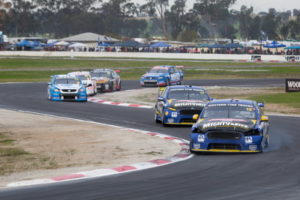 The Supercars Championship is organised and regulated by the Fédération Internationale de l’Automobile and events take place across Australian states and in the Northern Territory. Whilst the main events are predominantly limited to Australia and New Zealand, some rounds have previously been hosted in Bahrain, the United States, China and the United Arab Emirates. The various events have different lengths to them, depending on where they’re being held and the style of them, including two driver endurance races.
The Supercars Championship is organised and regulated by the Fédération Internationale de l’Automobile and events take place across Australian states and in the Northern Territory. Whilst the main events are predominantly limited to Australia and New Zealand, some rounds have previously been hosted in Bahrain, the United States, China and the United Arab Emirates. The various events have different lengths to them, depending on where they’re being held and the style of them, including two driver endurance races.
Watched in more than 100 countries and with the show events boasting attendances of over 250,000, it’s fair to say that the Supercars Championship might well be one of the most popular events that you’ve never heard of.
A motor racing sport, the cars used are based on the sort of four-door saloon cars that you’d see on the road. The series was opened up to numerous manufacturers for the cars in 2013. The touring race car championship is probably most closely linked in terms of style to the likes of NASCAR in America; though there are obviously significant differences between the sports.
Where Can You Bet On Supercar Races
Bet365

bet365 are known as a bookmaker that provide different and varied markets and they are one of the best for betting on Supercars.
They generally have outright markets way in advance of the season but where they really stand out is the depth of options and specials once the season starts. If you want to bet on other things apart from the winner this is the site to use.
One area they are not so strong in is the offers, so if you are betting on common markets such as the outright winner also consider other bigger companies.
Betting On Supercars
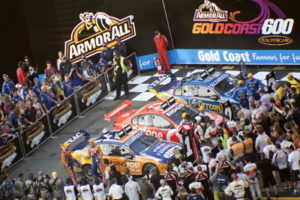 If you head to Australia and go into a bookmakers over there then you’ll find the number of bets you can place on the Supercars Championship to be almost as numerous as those you can place in England on the Premier League. The sport is taken seriously Down Under and you can bet on pretty much anything you want to.
If you head to Australia and go into a bookmakers over there then you’ll find the number of bets you can place on the Supercars Championship to be almost as numerous as those you can place in England on the Premier League. The sport is taken seriously Down Under and you can bet on pretty much anything you want to.
For the majority of British bookmakers, however, there is limited knowledge of the Supercars series and therefore markets are extremely limited. You can always bet on the outright winner of the championship, but past that you’ll have to either find a bookie that has some specialist knowledge of the sport or else request odds from your favourite companies.
In terms of what to bet on, if you find the right bookmaker you can look at the likes of qualification betting, betting on individual races, Over/Under lines and battles between two drivers against each other. Just bear in mind that overtaking is common in Supercar betting, so pole position doesn’t guarantee anything, and many of the circuits, such as Bathurst, are specialist and ask specific questions of the drivers.
The History Of Supercars
Relatively Modern Sport
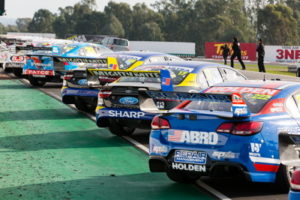 Supercars is a relatively modern sport, with the idea of creating a championship based around V-8 Fords and Holdens first being mooted in 1991. It was almost a sport that never happened, with both Holden and Ford keen to know what plans were going to be brought in for V-8 engines before committing to anything and the Confederation of Australian Motor Sport waiting to see what decisions the Fédération Internationale de l’Automobile would make regarding 2.0 and 2.5-litre touring cars.
Supercars is a relatively modern sport, with the idea of creating a championship based around V-8 Fords and Holdens first being mooted in 1991. It was almost a sport that never happened, with both Holden and Ford keen to know what plans were going to be brought in for V-8 engines before committing to anything and the Confederation of Australian Motor Sport waiting to see what decisions the Fédération Internationale de l’Automobile would make regarding 2.0 and 2.5-litre touring cars.
The Australian Touring Car Championship announced its plans for the upcoming season in November of 1991 and it was immediately clear that the V-8 engine cars would be faster than alternatives with smaller engines. CAMS wanted to adjust things to try to make them fairer but endured protests from Holden and Ford, who were concerned about the idea of the smaller cars getting the better of them. Instead, the organisation chose to introduce a class structure that worked as followed:
- Class A would be for 5.0-litre V8 Fords and Holdens that were produced in Australia
- Class B was for those 2.0-litre cars that complied with the regulations in place for FIA Class II Touring Cars
- Class C was a short-lived class for two-wheel drive cars complying with the 1992 CAMS Group 3A Touring Car regs
Before The Series Began
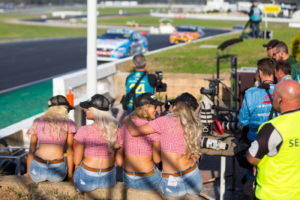 When the Australian Touring Car Championship took place in 1993, cars from all three of those classes were allowed to take part in it. The same cars also took part in a number of Australian touring car event that weren’t for the championship, like the Bathurst 1000. They were split into the Over 2,000cc and Under 2,000cc allocations.
When the Australian Touring Car Championship took place in 1993, cars from all three of those classes were allowed to take part in it. The same cars also took part in a number of Australian touring car event that weren’t for the championship, like the Bathurst 1000. They were split into the Over 2,000cc and Under 2,000cc allocations.
2.0-litre cars began to be able to compete with the V-8s later in 1993. At the same time, Holden began to complain that Ford cars had an aerodynamic advantage over their vehicles, which directly contradicted the idea behind the new parity rules and regulations that had been introduced. The accessibility of the races to 2.0 litre cars only lasted until 1995, at which point they moved over to the Super Touring Cars series instead.
The V-8 Series Takes Shape & Expands
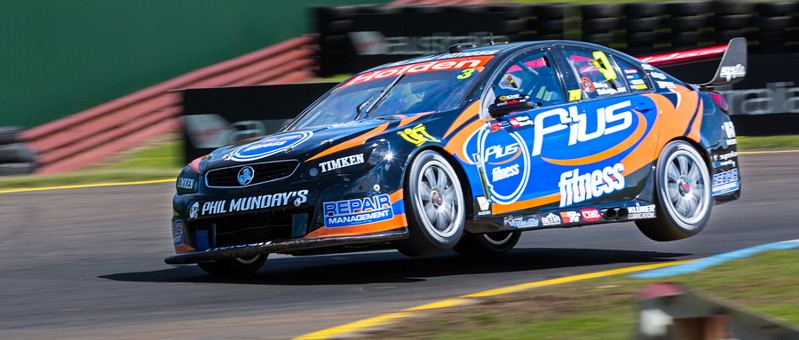
In November of 1996 the Australian Vee Eight Super Car Company is formed as a joint venture between the Australian Motor Sports Commission, the sports promotion company IMG and the Touring Car Entrants Group of Australia. It was the first time that the sport had begun to take real shape, with the name ‘V8 Supercars’ being adopted as a consequence. There was also a television deal organised with Fox Sports and Network 10, which gradually began to lead to an expansion of the series.
The Supercars Championship as we know it today enjoyed its debut season in 1997 and within a year it was already being expanded. That included a new race in the Northern Territory, whilst the year after that a street-race was added to the roster. Endurance races were added to the Championship in 1999 and a brief experiment with reverse grid races occurred after the turn of the millennium. Having enjoyed a sponsorship deal with Shell, that ended in 2002 when the tires also moved to Dunlop from Bridgestone and the competition’s name was changed to V8 Supercar Championship Series.
Project Blueprint & The Search For Parity
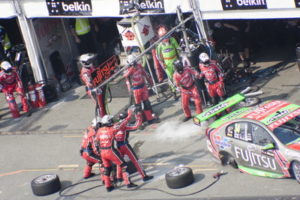 Once Supercars had started to become a popular sport throughout the antipodean territories the requirement to try to make it better came into play. The key way to do that was to make the requirement for parity even clearer, given the domination of Holden cars in 1998, 1999, 2001 and 2002. Indeed, the manufacturer was so dominant that Ford briefly threatened to withdraw from the series altogether.
Once Supercars had started to become a popular sport throughout the antipodean territories the requirement to try to make it better came into play. The key way to do that was to make the requirement for parity even clearer, given the domination of Holden cars in 1998, 1999, 2001 and 2002. Indeed, the manufacturer was so dominant that Ford briefly threatened to withdraw from the series altogether.
In 2003 a new set of regulations to try to tighten the parity in the aport were introduced, nicknamed Project Blueprint. The brainchild of Paul Taylor and Wayne Cattach, who had spent two years trying to find a way of levelling the playing field between Holden and Ford, Project Blueprint became the standard for the sport and has simply evolved and altered in the year that followed. As well as ensuring a greater sense of parity, Project Blueprint was also designed to lower costs involved in the sport.
The Cars and Rules
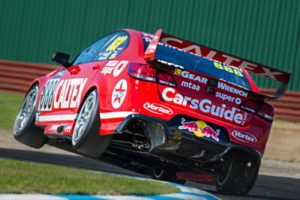 There are specific rules that dictate how V8 Supercars should both look and perform. They are constantly under review by the FIA, so if you want to know exactly what specifications are in play at any given time then you’re best to look at the Supercars Championship rulebook.
There are specific rules that dictate how V8 Supercars should both look and perform. They are constantly under review by the FIA, so if you want to know exactly what specifications are in play at any given time then you’re best to look at the Supercars Championship rulebook.
The rules are mainly there to ensure parity as much as possible between the various manufacturers, meaning that the slight discrepancies and the skill of the drivers was what separated them at the end of the season. The rules are also designed to limit the cost of both building and then repairing the cars.
Here’s a look at the most important of these rules:
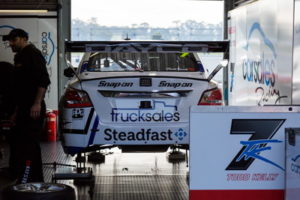 Car bodies are based on the actual production car, with them being lengthened or shortened to ensure parity. For the 2019 season, these were the cars that were allowed to be used in competition:
Car bodies are based on the actual production car, with them being lengthened or shortened to ensure parity. For the 2019 season, these were the cars that were allowed to be used in competition:
- Volvo S60
- Mercedes-Benz E63 AMG W212
- Ford Mustang GT
- Nissan Altima L33
- Holden ZB Commodore
The bodies have numerous safety features put into them, including a full roll cage built around the control chassis. The safety features include a fire extinguisher system and a collapsible steering column. The cars boast spoilers and splitters to give them aerodynamic features, with tests carried out to ensure that there is parity in the amount of drag and downforce in play.
Cars must weigh a minimum of 1,395 kilograms that includes the driver. At least 755 kilograms of that weight has to be over the front axle and a driver, in his full racing suit and mounted in his seat, needs to weigh at least 100 kilograms, with ballast added if they don’t.

When it comes to the engines, they need to be front-based and have rear-wheel drive. The engine can be 4, 6 or eight cylinders but can’t exceed the Supercar accumulated power output. Manufacturers can either go with one of their own engines or a generic one that V8 Supercars will provide. They have a compression ratio of 10:1 and are limited electronically to 7,500 revs per minute.
MoTeC provides an electronic control unit for the cars that optimises and monitors aspects of the performance that the engine produces. Teams can read the information provided by the ECU and monitor things such as fuel consumption, whilst race officials also use the date to scrutinise the races themselves.
The suspension in Supercars is a double wishbone setup and features shock absorbers and an anti-roll bar, both of which can be adjusted from the cockpit. All cars have their disc brakes supplied by AP Racing.
As mentioned, one of the hopes of the regulations was that they would reduce the cost of building a car to around 250,000 Australian dollars, having previously sat at around $450,000 AUD, not including the engine. Engines, meanwhile, cost around $50,000 AUD rather than the previous figure of $120,000 AUD.
Competition Structure
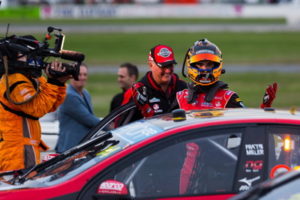 Drivers that wish to take part in the Supercars Championship are required to have a CAMS National Circuit Competition Licence or one of an equivalent or higher value. Cars that are used must have a contract between Supercars as an organisation and the team that outlines the obligations placed on that team, known as a Racing Entitlements Contract.
Drivers that wish to take part in the Supercars Championship are required to have a CAMS National Circuit Competition Licence or one of an equivalent or higher value. Cars that are used must have a contract between Supercars as an organisation and the team that outlines the obligations placed on that team, known as a Racing Entitlements Contract.
Supercar teams are made up of between one and four cars, though teams that have only one car tend to form alliances with larger teams. Teams with RECs are the only ones allowed to compete in the individual events, with the exception of the endurance races that accept wild cards. In those races teams are obliged to employ a co-driver for each car that they have so that the drivers can substitute in for each other.
There is a development series for Supercars, known as the Dunlop Super2 Series that was originally created for privateers that didn’t have the funding to compete professionally. Nowadays it is more of a chance for young drivers to develop their skills.
Race Format
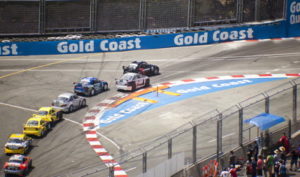 The specific events are something we’ll cover separately, but there are four main different race formats. These are as follows:
The specific events are something we’ll cover separately, but there are four main different race formats. These are as follows:
- SuperSprint races have a fifteen minute qualifying session ahead of a 120 or 150 kilometre race on the Saturday and a 250 or 300 kilometre race on the Sunday. Example races include the Tasmania SuperSprint, Winton SuperSprint and the Darwin Triple Crown
- International SuperSprints, such as the Auckland SuperSprint in New Zealand, have a thirty minute practice session on the Friday before ten minute qualifiers on both the Saturday and Sunday. They then see two 250 kilometre races take place, one on each day
- SuperStreet races, as you might imagine, see racing take place on roads at specific locations. The Adelaide 500 and Melbourne 400 are good examples, with the former having a 250 kilometre race on each day and the latter a 200 kilometre race on both the Saturday and the Sunday
- The Enduro Cup is the name given to the three endurance races held during the season. They all have practice sessions ahead of mammoth races
Major Supercar Events
| Event | Information |
|---|---|
| Bathurst 1000 | Sometimes called ‘The Great Race’, this event has taken place in some variation or another since 1960. It is the longest event on the Supercars circuit and sees drivers race 1000 kilometres on the Mount Panorama Circuit with the winner being awarded the Peter Brock Trophy |
| The Gold Coast 600 | Introduced in 2009 as a replacement for the A1 Grand Prix event that was cancelled when the series owner went into liquidation, it sees two 300 kilometre races take place over two days |
| Sandown 500 | Originally a six-hour race when it was first held in 1964, it is seen by some as a warm-up race for Bathurst and makes place over 500 kilometres and 161 laps of Sandown Raceway |
| Adelaide 500 | Another race that involves drivers taking on 500 kilometres of racing, this is slightly different from the others in the sense that it’s two 250 kilometre races rather than a single 500 kilometre one. It is one of the most popular races on the circuit, with more than 250,000 people turning up to Adelaide’s Grand Prix Circuit to watch it |
| Newcastle 500 | The final race worth mentioning is the one that used to be known as the ‘Grand Finale’ when it was the final round of the season and based at numerous tracks around the country. Nowadays it takes place on the streets of Newcastle, which is about 150 kilometres from Sydney, and is one of few street races in the series |
The Supercar Championship is the overriding event of the sport, gaining its inaugural season in 1997. There are certain requirements placed on teams and drivers in order to allow them to take part in the Championships and its associated events, as discussed elsewhere. There are five big races that take place during the season, the table above takes a quick look at them.
How Events Are Scored
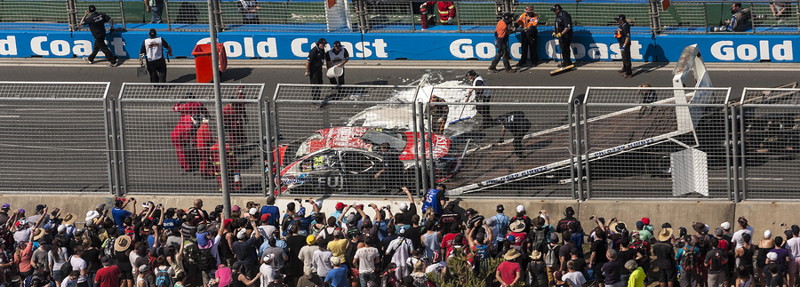
The points system for the Supercars Championship sees points awarded on a sliding scale basis depending on where drivers finish. If there’s more than one race during an event then the points are shifted with each each race in order to ensure that a driver winning all of the races can be awarded 300 points.
In order to be awarded any points at all a car needs to have covered at least 75% of the total distance of the race. The final lap also needs to be raced with a time that is no more than 200% of the winner’s fastest lap time. If it’s an endurance event then both drivers’ performances go towards the total score awarded to the car.
